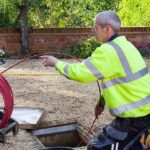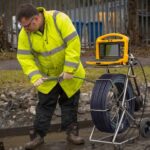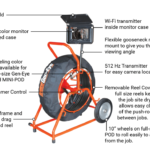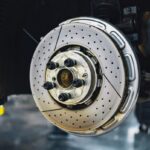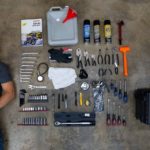Blocked drains and damage to sewer pipes aren’t issues that you want to leave hanging. Besides the stench, ominously slow drainage, bubbling toilets, and the backing up of waste or sewage take into consideration that there are serious health risks if the problem isn’t dealt with on time. Severe blockage and leaky pipes can also cause extensive property damage, meaning expensive repair bills. Spotting the issue early and getting a drain inspection can reveal where the problem occurred and what measures are needed to make it all go away.
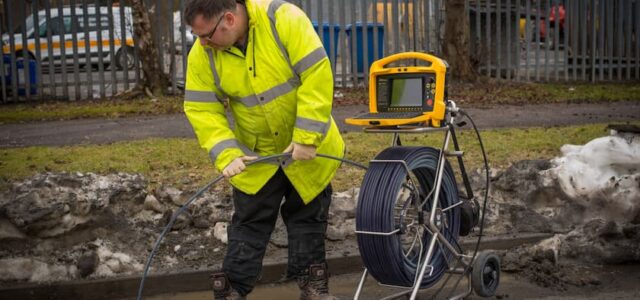
Why Have a Drain Inspection?
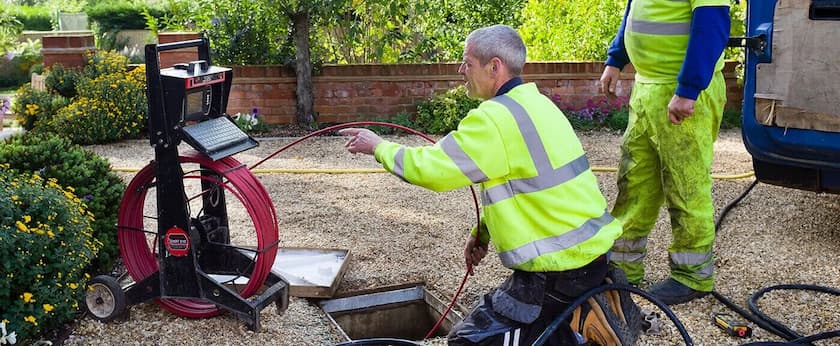
Drain inspections are procedures that check for obstructed, leaky and damaged drain, sewer and stormwater pipes. If you have any of the tell-tale signs of a blocked drain, or the related instances of mould buildup, sudden pest infestation, cracks in concrete and walls, mushrooming grass patches…the list goes on, then a thorough inspection can help. Not only are drain inspections quick and non-invasive and reveal the root cause of the blockage or pipe damage, but they also assess the condition of the rest of the piping. Corrosion, collapsed pipes, tree root infiltration, faulty fittings, and general wear and tear can be dealt with sooner than later, and home and business owners can save money and time from extensive repairs further on.
Trained drain inspectors use high-definition drain cameras attached to long, flexible cables to search pipes for any faults, damage or clogging. These provide detailed videos and stills of any issues, can detect hidden and potential problems, and don’t require digging or excavation, or drilling into walls or driveways. The data is displayed on-screen in real-time and stored for further reference.
The Anatomy of a Drain Camera
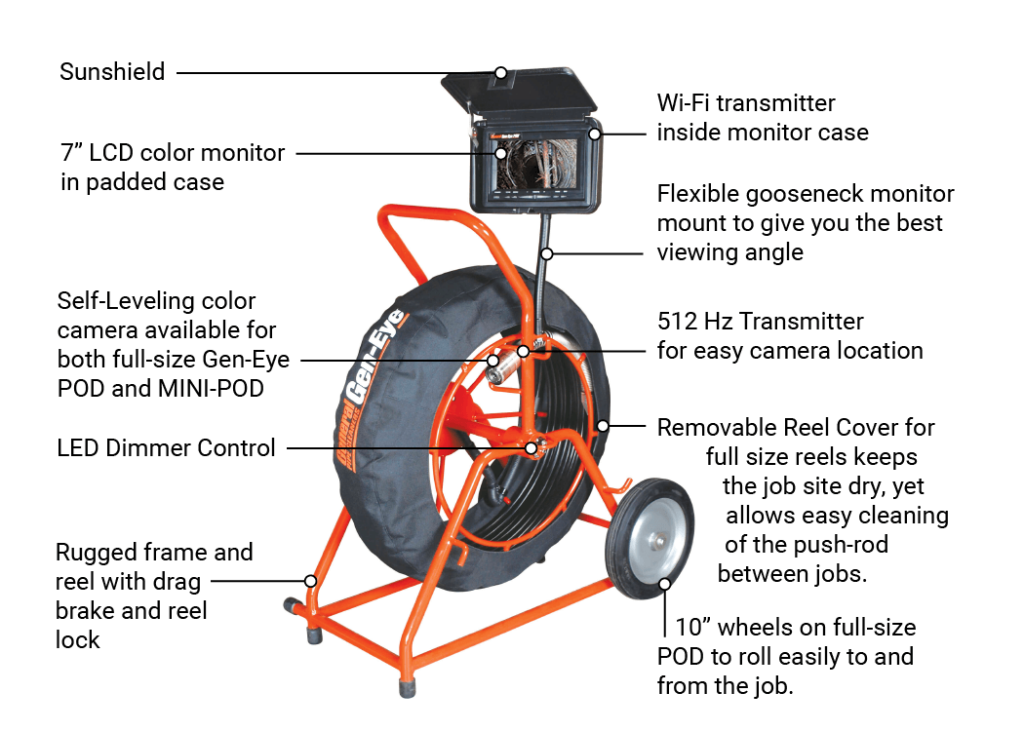
These are advanced pieces of technology, consisting of a combination of high-end electronics and robust materials. Lenses, sensors, rods, reels and monitor hubs and a range of accessories can reveal even the smallest details lurking in the piping.
Drain Camera Lenses and Sensors
Lenses and sensors are the business end of drain cameras, allowing the capture of crisp and clear video and photos. The wide field of view, equating to 90 degrees or 18mm in standard full-frame cameras gets you all the nitty-gritty of every millimetre of piping. Most also have a zoom function to pinpoint different areas of the piping, without sacrificing clarity. This is in addition to the panning and tilting options that allow operators to capture 360-degree horizontal and 180-degree vertical snapshots. To counter the harsh environment and lack of light, the cameras are also fitted with dual-tone LED illumination.
Again, this is not your average lens as evidenced in the build. The sapphire coating and waterproof metal housing allow the camera to work continuously while being battered against pipe walls and subjected to waste, oils, acids, water, and corrosive materials not to mention other nasties like bacteria and pests. But the tough build and IP68 rating of the lens if worthless if not paired with a high-resolution, industry-leading sensor. This is the same in the latest line of professional cameras, so images can be digitally zoomed where optics fall short.
Cables and Reels
The camera housing is attached to a cable. This can be in different lengths and made of different materials. It needs to be both flexible and tough to make its way through tight bends and get the camera where it’s needed. Basic push rod cables are 20 metres long and good for inspecting residential plumbing and piping, whereas industrial and commercial sites are scoured with cables up to 120 metres in length. The cables themselves are co-axial and housed in either PVC-coated fibreglass or tougher Kevlar. The latter is also more expensive but will last longer in regular use. Cables are wound from portable steel reels and frames with provisions for the monitoring hub.
Monitoring Hubs
These consist of widescreen LCD or TFT monitors in either HD or 4K resolution. Monitors and control hubs control the function of the camera, the LED lighting and the zoom, panning and tilting features of drain cameras. Images and videos are recorded directly onto an SD card or beamed to other devices via Bluetooth. In addition, most hubs include keyboards for text input. In units fitted with sondes in the camera head, the monitors can also display the exact location of your finds using GPS coordinates. Powering cameras and monitors are rechargeable lithium batteries rated to last 8 hours or more, along with the option for a mains connection in longer inspections.
Other Handy Features
Carry cases are supplied with most pipe inspection cameras. These are lightweight, watertight and tough. Other accessories, such as camera skids keep the camera head raised above pipe floors and prevent damage.
The Final Word
Certified operators and professional plumbers with the right training can make the best use of a sewer camera inspection kit. This after all is a pro piece of gear with corresponding prices. If you suspect any damage to plumbing or piping in and around your home, there’s also the option of renting the equipment. Most inspections are short, taking roughly an hour, but stubborn clogs and pipes with major damage can see you use the inspection camera for the better part of the day.

